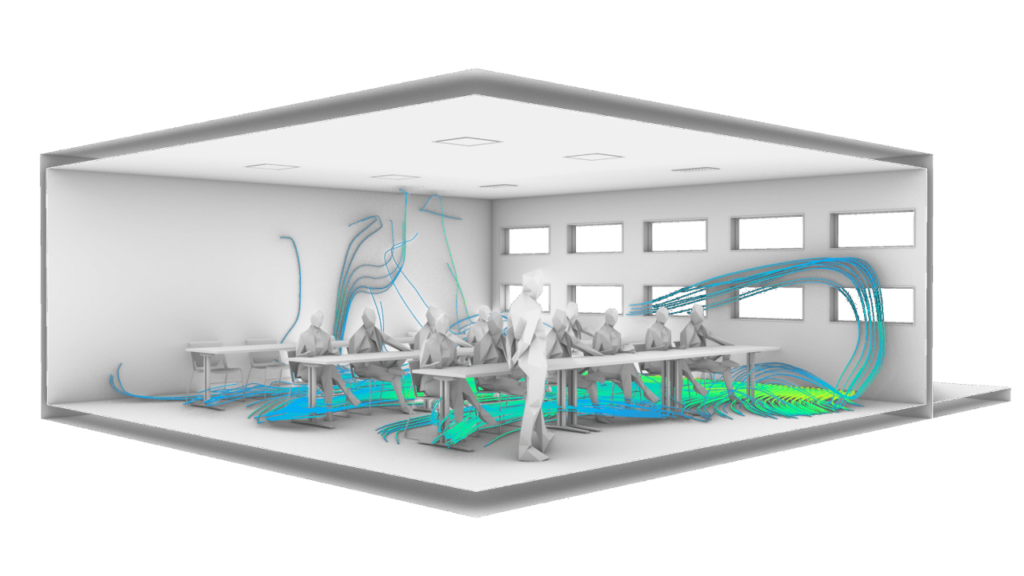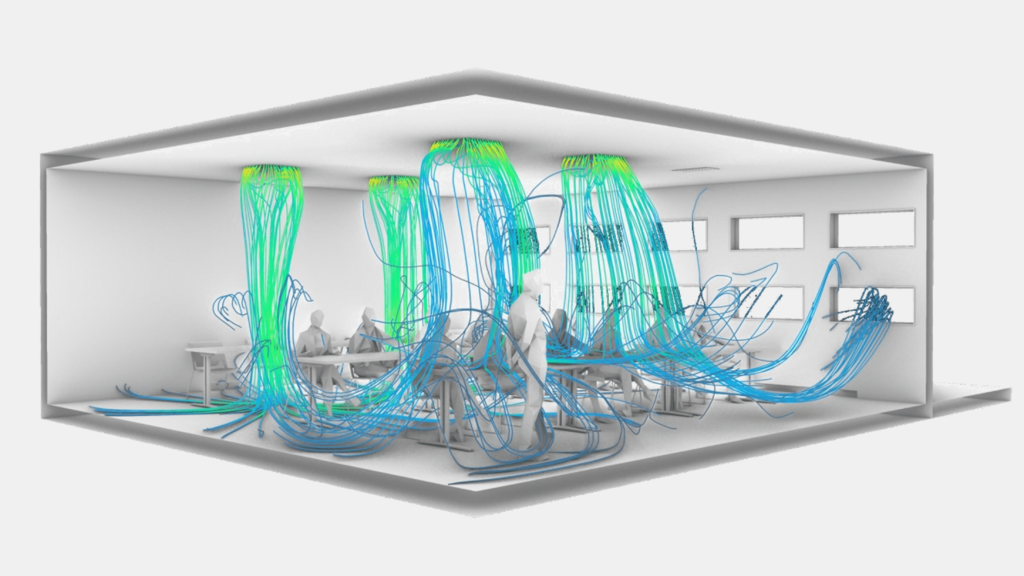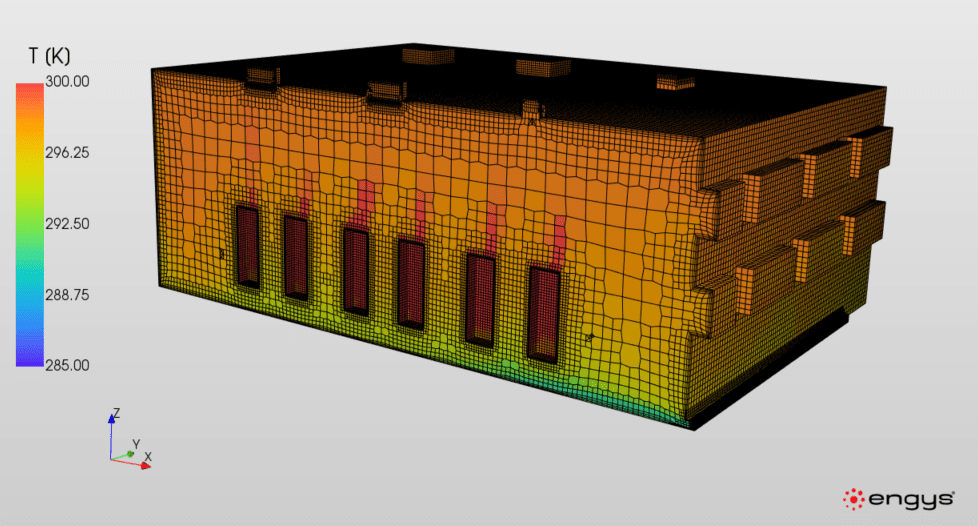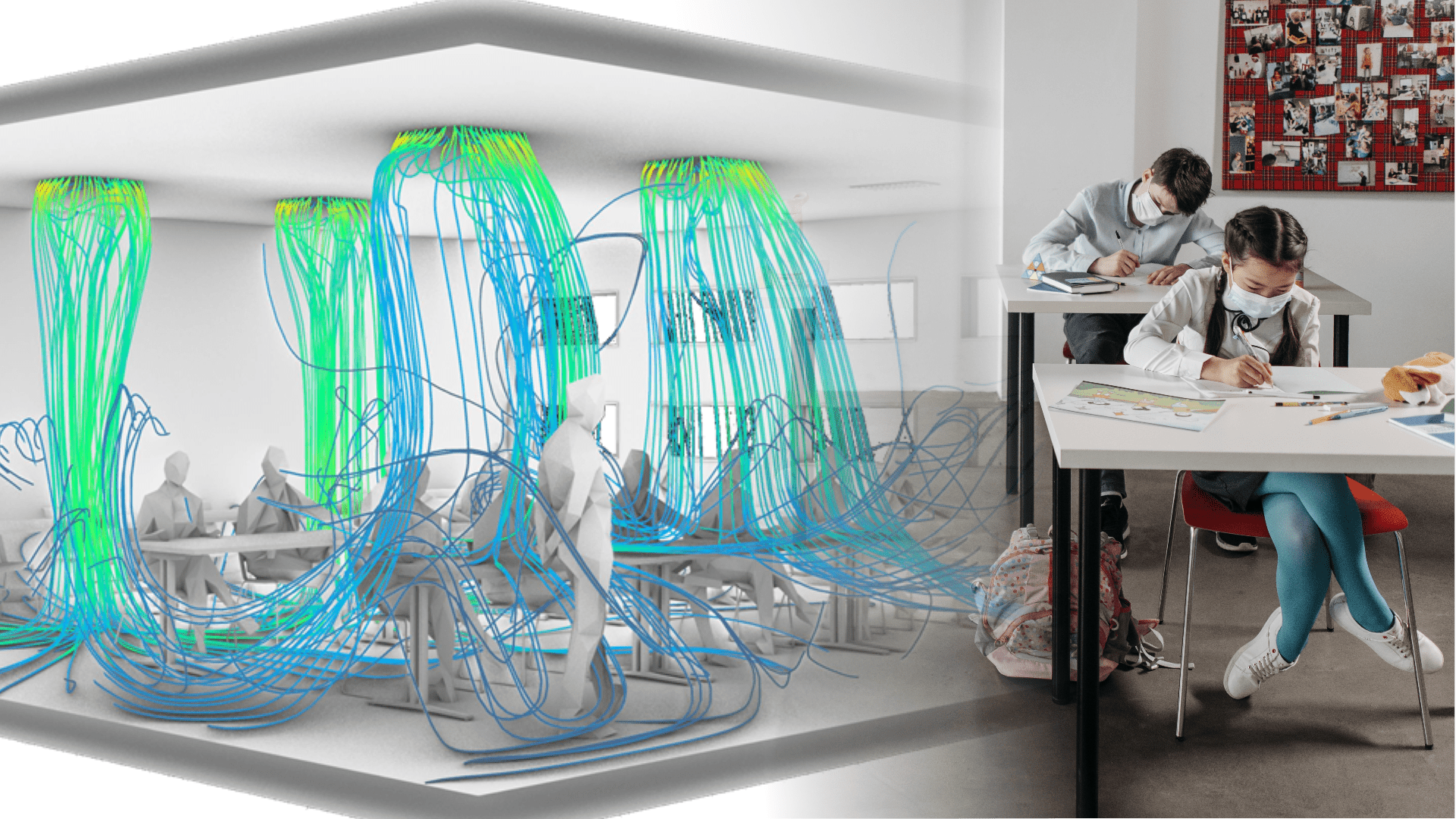The global pandemic has highlighted the importance of indoor air quality and how innovative ventilation strategies can reduce the spread of diseases, saving lives. According to the Centers for Disease Control and Prevention (CDC), COVID-19, along with diseases such as tuberculosis, measles and chicken pox, predominantly spread by airborne transmission.
This is where small droplets and aerosol particles containing the virus are inhaled by a person, contaminate surfaces they touch or land on their eyes, nose or mouth. These droplets can remain in the air for hours and can infect people who are up to 1.8 m (6 ft) away.
To reduce the concentrations of these infectious droplets in the air, effective ventilation needs to be achieved. In fact, the World Health Organisation (WHO) suggests that six air changes per hour (ACH) can significantly reduce the spread of viruses like COVID-19.

Ventilation
There are two main methods of ventilation; natural and mechanical. Natural ventilation is driven by pressure differences within the building design and includes opening windows and doors.
Mechanical ventilation involves advanced heating, ventilation and air conditioning (HVAC) systems. These exchange stale indoor air with fresh filtered outside air and exhaust VOCs [Volatile Organic Compounds], CO2 and viruses. Effective HVAC systems also eliminate recirculation and cross contamination between airstreams.
‘This is particularly important in classroom environments,‘ highlights Katrina Koszorek, Marketing Manager at Oxygen8, which specialises in high-efficiency ventilation systems. ‘A lack of sufficient ventilation can increase airborne transmission of viruses and reduce the cognitive function of students and teachers. Unfortunately, many schools have insufficient or no ventilation systems. To demonstrate the importance of ventilation in classrooms, we wanted to conduct a comprehensive indoor air quality study.‘
For a 9x9x3 m (30x30x9 ft) classroom containing 30 students, the American Society of Heating, Refrigerating and Air Conditioning Engineers (ASHRAE) recommends a minimum ventilation flow rate of 408 cubic feet per minute. This equates to three ACH, while the Harvard T.H. Chan School of Public Health states that six ACH is the ideal number, with five ACH a minimum.
CFD Simulation of HVAC Designs
Oxygen8 partnered with Integral Group, a design engineering consultancy, who completed the study using HELYX Computational Fluid Dynamics (CFD) software. The study investigated the concentration of airborne pathogens in a classroom with two different types of HVAC design providing three ACH.

The first design used displacement ventilation, where fresh air is supplied at low velocity through diffusers close to the floor. This creates an area of cool, fresh air around the occupants. As the air warms, it rises, creating a thermal plume that drives stale air towards the ceiling where it is extracted.

The second design used traditional overhead mixing, which provides high velocity air through diffusers on the ceiling. This fresh air then mixes with the internal air and a proportion of this mixed air is extracted.
Generating the Computational Grid
Creating the mesh of the complex geometries of the classroom was made much easier by HELYX’s hexa-dominant automatic mesher. Once the geometry files are uploaded, the specific requirements of the mesh are defined through a user-friendly GUI. The mesh is then automatically generated, with the algorithm optimising the cells to achieve a set of mesh quality metrics and capture the detailed characteristics of boundary layers whilst maintaining smooth transitions to the far field.
‘Typically, for the mesh you want a five to one ratio between the largest and smallest cells to achieve a healthy model with a suitable runtime,’ explains Thomas Bamber, Associate at Integral Group who conducted the study. ‘The smallest cells were approximately 7.8mm and were used in areas where we needed high resolution such as around the occupants and the diffusers.‘

‘In other CFD software, you have to build the mesh yourself which is a very manual process,’ continues Bamber. ‘For large-scale projects that can easily wipe out a week or two of work. However, the automated meshing in HELYX requires half the amount of effort and time. It also still gives you some flexibility, so you end up with a more accurate and robust mesh that is customised to your exact needs.’
Modelling COVID-19 Infested Particles
The biggest challenge of this CFD analysis, however, was modelling the behaviour of COVID-19 infested particles. This study took place during the middle of 2021 when the world was still trying to understand the science behind COVID-19 transmission.
‘I attended a CIBSE conference [Chartered Institute of Building Service Engineers] to understand how to model personalised COVID-19 breathe,’ explains Bamber. ‘The best science at the time was to use a tracer gas called SF6 as a proxy. We used that to model the exhaled breath of an infected student to then understand which ventilation system was most effective at minimising airborne transmission.’
Results and Conclusions
CFD simulations were run at different supply air temperatures and velocities for both types of HVAC design. Metrics such as temperature and age of air were then analysed and the CFD results were post-processed into a variety of images and animations.

The results revealed that displacement ventilation was much more effective at dispersing concentrations of the contaminant. The thermal plume quickly draws any contaminant directly upwards to the ceiling where it is exhausted. Whereas, overhead mixing ventilation resulted in a large area of mixed air where some contaminant particles remained.
‘The visuals generated from the CFD simulations are very powerful,‘ says Koszorek. ‘They clearly illustrate the difference between different ventilation methods. This really helped to explain the importance of indoor air quality, especially in school applications, to officials who are not particularly familiar with the principles of ventilation.’ This is just one example of how HVAC CFD software can be used within the design process of indoor environments to improve the health and wellbeing of occupants.
‘ENGYS have packaged a sophisticated coding script into a suite of software that can be used by people who aren’t fluent in code,’ concludes Bamber. ‘But HELYX isn’t too constrained as it allows you to manipulate the mesh and track specific metrics. So it still encourages you to understand how CFD works, which is really important when analysing real world problems.’


